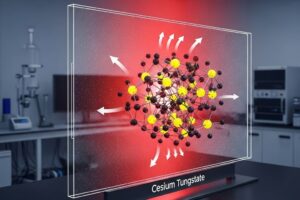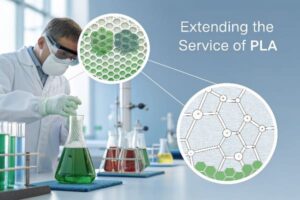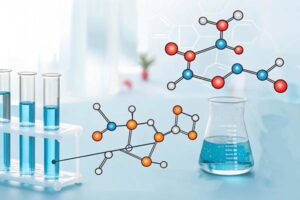Are your PET plastic products failing prematurely, especially in hot and humid conditions? Do you wonder why this seemingly stable material can suddenly become brittle or degrade? Understanding PET hydrolysis1 is key to preventing these issues.
PET plastic, while generally stable, is susceptible to hydrolysis, a chemical reaction with water that breaks down its polymer chains. This process is significantly accelerated by high temperatures and high humidity, leading to a loss of mechanical properties, making the plastic brittle and weak over time.

I've seen PET in countless applications, from water bottles to food packaging and even clothing fibers. It's truly ubiquitous. For a long time, we thought of PET as incredibly stable, a material that could last forever. However, working with it in various industrial settings, especially where products are exposed to demanding conditions, I've witnessed firsthand how quickly PET can degrade when faced with high heat and humidity. Initially, it was surprising to see such a robust material become brittle or fall apart. This experience highlighted the critical importance of understanding and addressing the hydrolysis problem, especially as PET finds more applications in diverse environments.
What is the Mechanism of PET Hydrolysis?
Are you curious about the specific chemical process that makes PET break down in water? You might think it is just melting or general decay. It is a precise chemical reaction.
The mechanism of PET hydrolysis involves water molecules attacking the ester bonds2 within the polyethylene terephthalate polymer chains. This reaction, catalyzed by heat and often by acidic or basic conditions, breaks the long polymer chains into shorter segments, leading to a reduction in molecular weight and a deterioration of the material's physical properties.

When I think about PET hydrolysis1, I visualize it as a tiny, relentless attack on the polymer structure. PET (Polyethylene Terephthalate) is a polyester, meaning its backbone is made up of repeating ester linkages. These ester bonds2 are quite stable under normal conditions. However, when you introduce water molecules, especially at elevated temperatures, those water molecules become very aggressive. They essentially insert themselves into the ester bonds2, breaking them apart. This process is often autocatalytic3, meaning the products of the reaction (like carboxylic acid end groups) can further accelerate the breakdown. Imagine a long string of beads. Hydrolysis is like cutting that string at various points. The result is many shorter strings instead of one long one. This reduction in chain length directly translates to a loss of strength, toughness, and overall mechanical performance. This is why a PET bottle left in a hot car can become brittle over time, and why PET films exposed to steam can lose their integrity. Understanding this mechanism is the first step toward finding effective solutions to protect PET from premature degradation.
| Factor | Role in PET Hydrolysis Mechanism | Impact on PET Degradation |
|---|---|---|
| Water Molecules | Act as nucleophiles, attacking the electrophilic carbon of the ester bond. | Essential reactant for hydrolysis; more water means more reactions. |
| Heat (Temperature) | Provides activation energy for the reaction; increases molecular motion. | Accelerates reaction rate significantly; speeds up bond breaking. |
| Ester Bonds | The primary site of attack for water molecules. | Their instability to hydrolysis is the root cause of degradation. |
| Carboxylic End Groups | Products of hydrolysis, can act as catalysts for further hydrolysis. | Can create an "autocatalytic3" loop, speeding up degradation. |
| Molecular Weight | Decreases as chains break into shorter segments. | Directly correlates with loss of mechanical strength and toughness. |
What are the Applications of PET Plastic?
Are you familiar with how widely PET plastic is used in our daily lives? You might just think of it as water bottles. Its applications are far more extensive.
PET plastic is a versatile material with widespread applications due to its excellent strength-to-weight ratio, clarity, gas barrier properties, and recyclability. It is predominantly used in packaging for beverages and food, but also finds significant use in fibers for textiles, films, and even engineering applications.

From my vantage point, PET is one of the pillars of modern material science. We see it every day, everywhere. Beyond the obvious plastic bottles for water, soft drinks, and cooking oils, PET is crucial for the food packaging industry because of its excellent barrier properties against gases like oxygen and carbon dioxide, which helps preserve freshness. Think of those rigid plastic containers for peanut butter or salad dressing – many are PET. But its utility doesn't stop there. One of its earliest and most enduring applications is in fibers, where it's known as polyester. These fibers are spun into everything from clothing to carpets and industrial textiles. PET films are another major category, used in magnetic tapes, photographic films, and even solar panels because of their high tensile strength and dimensional stability. Its lightweight yet robust nature makes it ideal for many uses where durability and low weight are important. Its widespread use, however, means that understanding and mitigating its degradation pathways, like hydrolysis, becomes even more critical to ensure product longevity and promote sustainable material cycles.
| Application Type | Specific Examples | Key PET Properties Utilized |
|---|---|---|
| Packaging | Beverage bottles (water, soda), food jars, blister packs | Clarity, gas barrier, lightweight, recyclability, strength. |
| Fibers/Textiles | Clothing, carpets, upholstery, industrial fabrics (e.g., conveyor belts) | High tensile strength, wrinkle resistance, durability, low moisture absorption. |
| Films | Photographic film, magnetic tape, electrical insulation, solar panel backsheets | High mechanical strength, dimensional stability, optical clarity, electrical insulation. |
| Engineering | Automotive parts (e.g., housings, connectors), switchgear | Good mechanical properties, electrical insulation, heat resistance (when reinforced). |
| Medical | Surgical implants (temporary), medical tubing | Biocompatibility, sterilizability. |
How to Solve the PET Hydrolysis Problem?
Are you struggling with PET products breaking down due to moisture and heat? You might think there's no way to truly protect it. There are effective solutions to combat PET hydrolysis1.
To solve the PET hydrolysis1 problem, several strategies can be employed, primarily through the use of anti-hydrolysis agents4 (such as carbodiimides) that capture water or react with degraded polymer ends. Other solutions include optimizing processing conditions, adding chain extenders5, and using drying agents to minimize moisture content from the start.

When our customers face hydrolysis issues with their PET products, my first recommendation is often to look at anti-hydrolysis agents4. PET is widely used, but in extreme environments, it can break down too easily. For instance, in applications like rPET (recycled PET), the material has already been subjected to heat during its previous life and processing, introducing more chain ends and making it even more susceptible to hydrolysis in subsequent processing or end-use. This is where chain extenders5 and anti-hydrolysis agents4 derived from carbodiimide chemistry become invaluable. These agents work by physically reacting with the carboxylic acid and hydroxyl end groups that are either present in the polymer or are formed during the initial stages of hydrolysis. By binding to these ends, they effectively "re-link" broken chains or "cap" the reactive ends, preventing further chain scission. This not only mitigates ongoing hydrolysis but can also improve the molecular weight and mechanical properties of the PET, sometimes even restoring properties lost during recycling. Beyond additives, simply ensuring that the PET is thoroughly dried before processing is crucial, as any residual moisture will exacerbate hydrolysis during melt extrusion. Optimizing processing temperatures to be as low as possible while maintaining good flow is also important. By combining these approaches, we can significantly extend the service life of PET products, ensuring they perform as intended even in challenging high-temperature and high-humidity environments.
| Strategy | Mechanism | Benefit in Solving Hydrolysis |
|---|---|---|
| Anti-hydrolysis Agents (Carbodiimides) | React with carboxylic acid and hydroxyl end groups, and/or scavenge water. | Directly prevents chain scission, maintains molecular weight, extends service life. |
| Chain Extenders | Re-link broken polymer chains, increasing molecular weight. | Improves mechanical properties, especially for recycled PET (rPET). |
| Thorough Drying | Removes moisture from PET pellets before processing. | Minimizes water availability for hydrolysis during high-temperature processing. |
| Optimized Processing Conditions | Lower melt temperature, shorter residence time in extruder. | Reduces the energy input that accelerates hydrolysis. |
| Barrier Coatings/Encapsulation | Prevents contact of PET with external moisture. | Physical barrier against hydrolytic agents for specific applications. |
Conclusion
PET hydrolysis1 is a significant challenge in hot and humid environments. Understanding its mechanism is critical. Employing anti-hydrolysis agents4 offers a powerful solution to enhance durability and extend the service life of PET products.
Understanding PET hydrolysis is crucial for preventing premature degradation of plastic products. ↩
Discover ester bonds in the stability and degradation of PET. ↩
Learn about the autocatalytic process and its implications for PET degradation. ↩
Understand how anti-hydrolysis agents can protect PET from degradation. ↩
Learn how chain extenders can enhance the mechanical properties of PET. ↩






